8 Vegetables That You Can Regrow Again And Again.
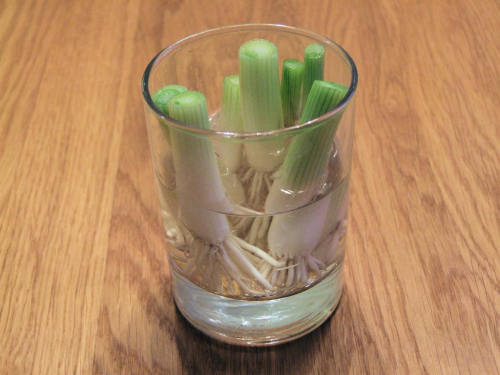
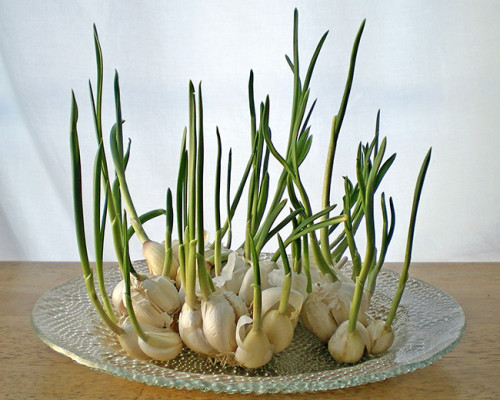
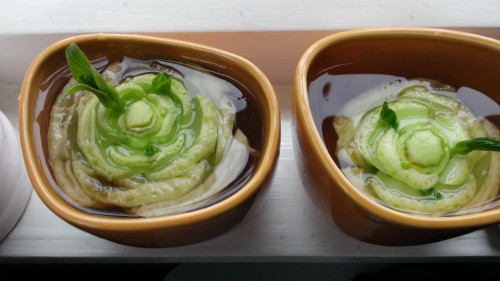
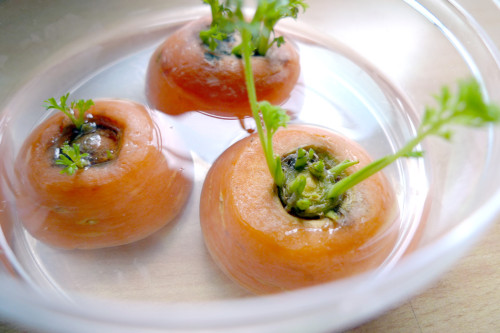
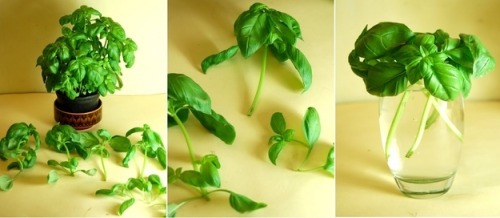

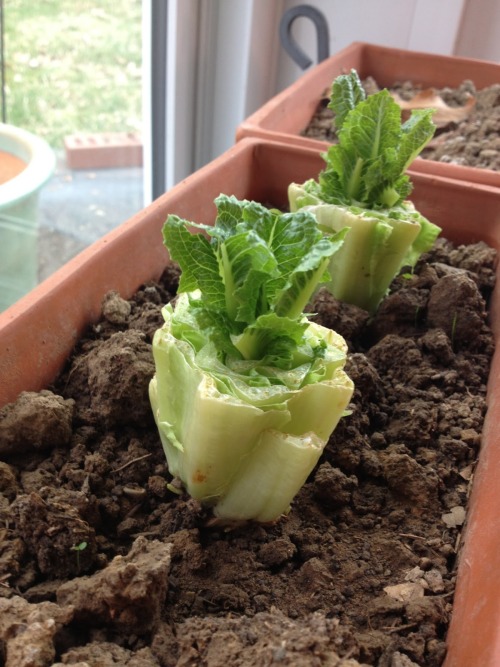
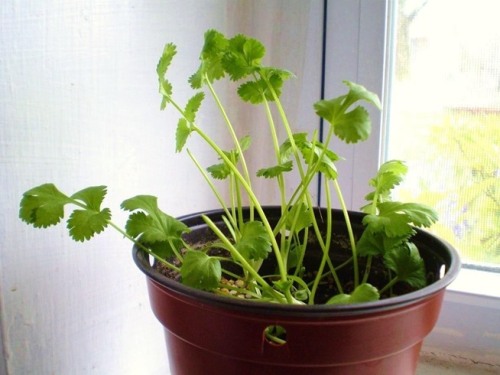
8 vegetables that you can regrow again and again.
Scallions
You can regrow scallions by leaving an inch attached to the roots and place them in a small glass with a little water in a well-lit room.
Garlic
When garlic begins to sprout, you can put them in a glass with a little water and grow garlic sprouts. The sprouts have a mild flavor than garlic and can be added to salads, pasta and other dishes.
Bok Choy
Bok choy can be regrown by placing the root end in water in a well-lit area. In 1-2 weeks , you can transplant it to a pot with soil and grow a full new head.
Carrots
Put carrot tops in a dish with a little water. Set the dish in a well-lit room or a window sill. You’ll have carrot tops to use in salads.
Basil
Put clippings from basil with 3 to 4-inch stems in a glass of water and place it in direct sunlight. When the roots are about 2 inches long, plant them in pots to and in time it will grow a full basil plant.
Celery
Cut off the base of the celery and place it in a saucer or shallow bowl of warm water in the sun. Leaves will begin to thicken and grow in the middle of the base, then transfer the celery to soil.
Romaine Lettuce
Put romaine lettuce stumps in a ½ inch of water. Re-water to keep water level at ½ inch. After a few days, roots and new leaves will appear and you can transplant it into soil.
Cilantro
The stems of cilantro will grown when placed in a glass of water. Once the roots are long enough, plant them in a pot in a well-lit room. You will have a full plant in a few months.
More Posts from Copperfingertips and Others





There’s this greenhouse not too far from my house that I fell in love with when I went for the first time last year. It’s so crowded, but all of the plants are very healthy and pest-free. They have 50+ year old cacti and a ton of exotic plants.
@eternity-in-your-eyes this is just amazing! I don’t know if I’d be able to leave a place like that once I have entered haha thank you for the submission as I could only imagine having a greenhouse like that some day.
Basil, How To Grow More Than You Can Eat - Gardening at 58 North
~~~
Things I learned today #6
You can buy a single basil plant for around $5 or less, and take cuttings forever. Basil is an amazing plant and can be used for a lot of things! Including pesto, which you can make at home with a morter and pestal! (https://youtu.be/6-dOZezSwwM)
Giethoorn in Netherlands has no roads or any modern transportation at all, only canals. Well, and 176 bridges too. Tourists have to leave their cars outside of the village and travel here by foot or boat by. So you can probably imagine how peaceful it is here.










[Shameless self-promotion]
As we observe the winter solstice, my thoughts have turned to how solarpunks approach winter. As the days turn dark and cold, how does a society dependent on the sun continue to prosper?
Keep reading



i’ve long waited your arrival; welcome*

Researchers at Michigan State University have created a fully transparent solar concentrator, which could turn any window or sheet of glass (like your smartphone’s screen) into a photovoltaic solar cell. Unlike other “transparent” solar cells that we’ve reported on in the past, this one really is transparent, as you can see in the photos throughout this story. According to Richard Lunt, who led the research, the team are confident that the transparent solar panels can be efficiently deployed in a wide range of settings, from “tall buildings with lots of windows or any kind of mobile device that demands high aesthetic quality like a phone or e-reader.”
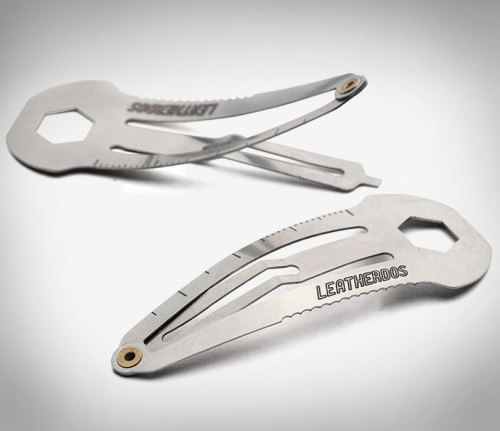
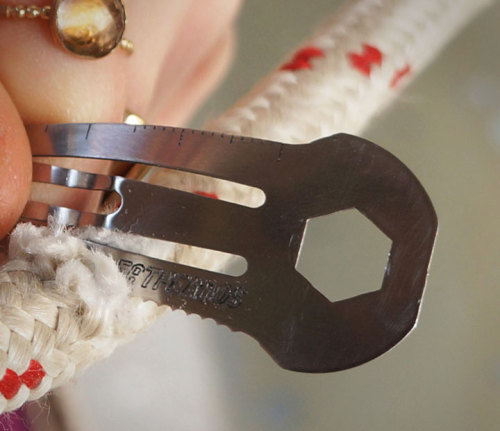
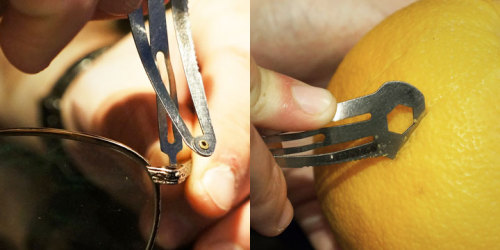
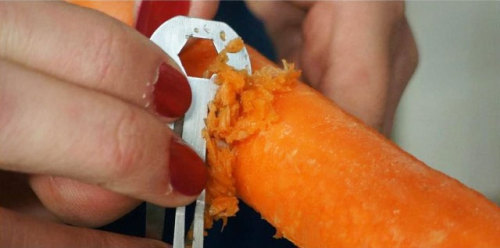
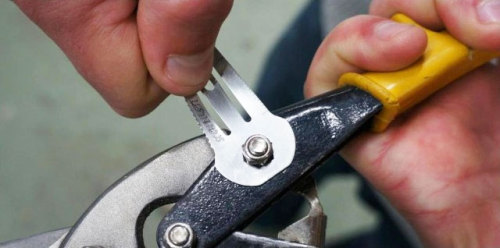
The Leatherdos is a hair clip that doubles as a multi-tool that combines 5 different tools in a tiny hair clip: screw-drivers, a wrench, a trolley coin, a ruler, and a cutting edge.
—->http://odditymall.com/leatherdos-is-a-hair-clip-multi-tool
How an island turned around their climate catastrophe

https://www.democracynow.org/2018/12/13/you_are_stealing_our_future_greta


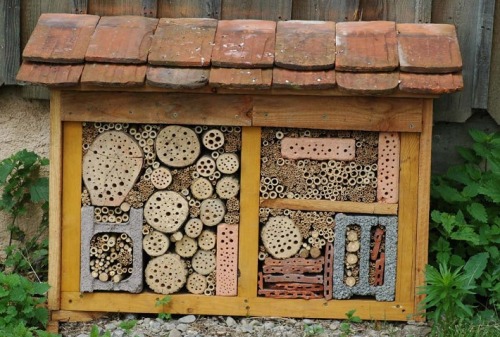
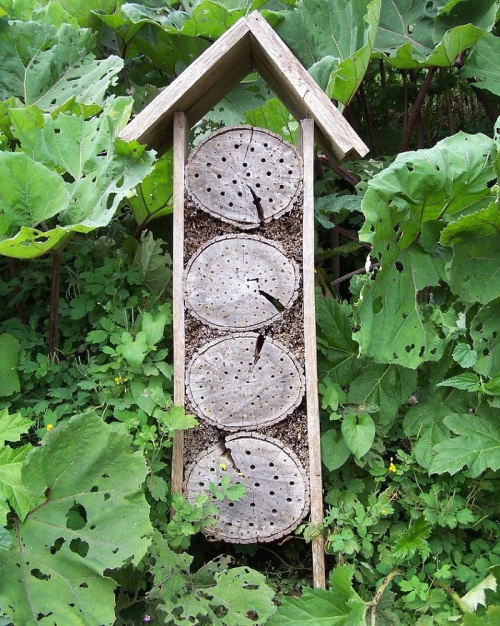

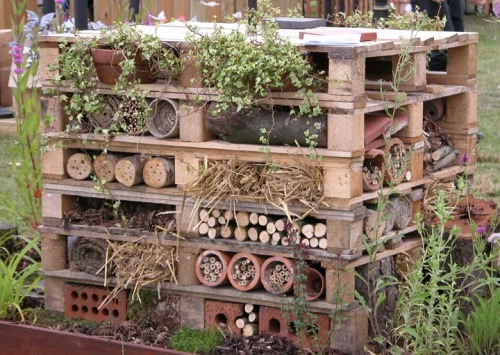

Insect Hotels
Over 30% of solitary bee species are wood nesters, some spending up to nine months of their lives as larvae incubating in forest deadfall. Ladybugs hibernate over winter in stacks of twigs, and other beneficial creatures – like wasps, lizards, moths, hedgehogs, beetles, and dragonflies – love to find little nooks and crannies to hide from predators and the elements, at any time of year.
An insect hotel is ideally placed in a sheltered location, but still in the sunlight. Ants sometimes eat bee larvae, so a solitary bee hotel is best placed off of the ground. Often, a wire mesh is placed on the outside to prevent bird predation. Ideally, the surrounding area should host flowering and insectary plants, to provide food for the guests!
These natural habitats are often missing from a domestic or overly-landscaped garden, and are absolutely vital to the health of your plants, local life web, and for the pollination of your garden. Designing for your native wildlife is crucial for a long-term healthy, productive, and sustainable space. Good, ecologically-minded design also minimises the amount of work you have to do: for example, I find that when I practice companion planting with insectary Apiaceae-family plants, I never have an aphid problem, because predatory beetles abound, and they eat problematic insects before they get established. Creating balanced ecosystems is a form of biological pest control.
An insect hotel is easily made from twigs, wood, tiles, pinecones, bricks, bark, grass, and other natural or salvaged materials. The form can differ, depending on what sort of creatures you would like to attract, and your aesthetics, but it should basically be designed from a “bug’s eye” view of the world: research what your local species are and what they require in terms of a habitat, and then create it for them in a manner that appeals to your eye.
These are also excellent projects for kids: they are fun and easy to make, interesting to observe, and help foster an early understanding of biology and ecology.
#DIY #bees #insects #entomology #biomimicry #permaculture #kids #art
Pre-made insect hotels: North America / Europe
Images:
B. Alter - Royal Bank of Canada New Wild Garden at the Chelsea Flower Show
sav-überlingen.de
Sissi de Kroon, flickr.com
Insect hotel in Hoofddorf, Holland. Bob Daamen, flickr.com
Cheshire Wildlife Trust, cheshirewildlifetrust.org.uk
Kevin Smith and Lisa Lee Benjamin. floragrubb.com
Inspiration Green Article on Insect Hotels
-
 joliebiijou reblogged this · 1 week ago
joliebiijou reblogged this · 1 week ago -
 7---freya---7 reblogged this · 1 week ago
7---freya---7 reblogged this · 1 week ago -
 vvermell reblogged this · 2 weeks ago
vvermell reblogged this · 2 weeks ago -
 dannyboyrope reblogged this · 2 weeks ago
dannyboyrope reblogged this · 2 weeks ago -
 yourwaitressismiserable reblogged this · 2 weeks ago
yourwaitressismiserable reblogged this · 2 weeks ago -
 mjimen19 liked this · 3 weeks ago
mjimen19 liked this · 3 weeks ago -
 blissfulamiwonderland liked this · 3 weeks ago
blissfulamiwonderland liked this · 3 weeks ago -
 sweettartcookies reblogged this · 3 weeks ago
sweettartcookies reblogged this · 3 weeks ago -
 sweettartcookies liked this · 3 weeks ago
sweettartcookies liked this · 3 weeks ago -
 hewwodarkness liked this · 3 weeks ago
hewwodarkness liked this · 3 weeks ago -
 losingtrackoftimeandspace liked this · 4 weeks ago
losingtrackoftimeandspace liked this · 4 weeks ago -
 idontknow13538 liked this · 1 month ago
idontknow13538 liked this · 1 month ago -
 5150 liked this · 1 month ago
5150 liked this · 1 month ago -
 jadedhawk liked this · 2 months ago
jadedhawk liked this · 2 months ago -
 dawn-of-the-fairies reblogged this · 2 months ago
dawn-of-the-fairies reblogged this · 2 months ago -
 millenniumtrampstamp liked this · 2 months ago
millenniumtrampstamp liked this · 2 months ago -
 cyborgmagm4r reblogged this · 2 months ago
cyborgmagm4r reblogged this · 2 months ago -
 tv-ajax liked this · 2 months ago
tv-ajax liked this · 2 months ago -
 papermachetincan liked this · 2 months ago
papermachetincan liked this · 2 months ago -
 dmcofficial reblogged this · 2 months ago
dmcofficial reblogged this · 2 months ago -
 darkestskull liked this · 2 months ago
darkestskull liked this · 2 months ago -
 ellensilica liked this · 2 months ago
ellensilica liked this · 2 months ago -
 sunslept liked this · 2 months ago
sunslept liked this · 2 months ago -
 alternativerabbit reblogged this · 2 months ago
alternativerabbit reblogged this · 2 months ago -
 husgroda reblogged this · 2 months ago
husgroda reblogged this · 2 months ago -
 hyeri-yah reblogged this · 2 months ago
hyeri-yah reblogged this · 2 months ago -
 hyeri-yah liked this · 2 months ago
hyeri-yah liked this · 2 months ago -
 kaiju-booty reblogged this · 2 months ago
kaiju-booty reblogged this · 2 months ago -
 legon751 reblogged this · 2 months ago
legon751 reblogged this · 2 months ago -
 acelez liked this · 2 months ago
acelez liked this · 2 months ago -
 k-a-a123 liked this · 2 months ago
k-a-a123 liked this · 2 months ago -
 teamplutoforlife reblogged this · 2 months ago
teamplutoforlife reblogged this · 2 months ago -
 projektbaphomet reblogged this · 2 months ago
projektbaphomet reblogged this · 2 months ago -
 projektbaphomet liked this · 2 months ago
projektbaphomet liked this · 2 months ago -
 its-belle-obviously reblogged this · 2 months ago
its-belle-obviously reblogged this · 2 months ago -
 its-belle-obviously liked this · 2 months ago
its-belle-obviously liked this · 2 months ago -
 highabovethecloudssomewhere liked this · 2 months ago
highabovethecloudssomewhere liked this · 2 months ago -
 the-nerd-circus liked this · 2 months ago
the-nerd-circus liked this · 2 months ago -
 bakersdozing liked this · 2 months ago
bakersdozing liked this · 2 months ago -
 inks-bad-case-of-dandruff reblogged this · 2 months ago
inks-bad-case-of-dandruff reblogged this · 2 months ago -
 metaphorgotten reblogged this · 2 months ago
metaphorgotten reblogged this · 2 months ago -
 inkillusionst liked this · 2 months ago
inkillusionst liked this · 2 months ago -
 metaphorgotten liked this · 2 months ago
metaphorgotten liked this · 2 months ago -
 eksterllently-weird reblogged this · 2 months ago
eksterllently-weird reblogged this · 2 months ago -
 hija-del-universo liked this · 2 months ago
hija-del-universo liked this · 2 months ago -
 buttonbax liked this · 2 months ago
buttonbax liked this · 2 months ago -
 skylarrikin reblogged this · 2 months ago
skylarrikin reblogged this · 2 months ago
